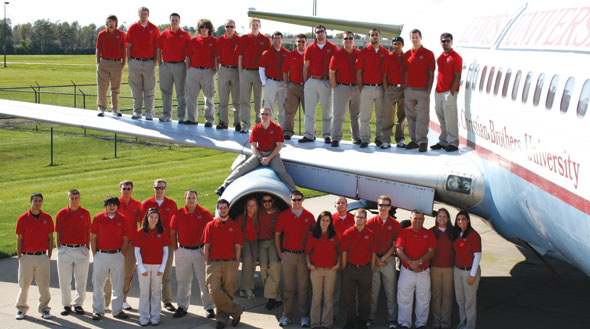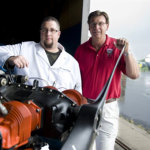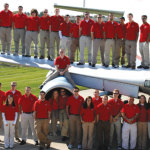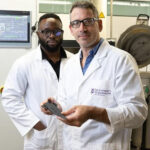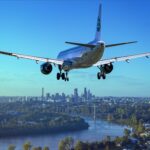A recently published Journal of Aviation Technology and Engineering article (“Measuring the Effectiveness of Photoresponsive Nanocomposite Coatings on Aircraft Windshields to Mitigate Laser Intensity”) shows Lewis University researchers have created a coating for aircraft that reduces pilot distraction from laser attacks.
In 2013 study, Lewis University proved these laser attacks, which average around 3,750 incidents a year, can be a distraction to pilots and a potential safety hazard during critical phases of flight. As part of continued research on the matter, Lewis University recently developed a practical and economical solution through the use of photoresponsive nanocomposite coatings on aircraft windscreens.
The most recent study determined the application of the engineered films resulted in a reduction in laser intensity from 36-88 percent.
The study was completed through collaboration of the Aviation, Physics and Chemistry departments at Lewis University. The Chemistry Department developed the photoselective coatings, and the Physics Department developed the apparatus to efficiently test the coatings while allowing safe viewings of laser illumination. The coatings were bench-tested in a laboratory prior to conducting field tests at the 200- and 500-foot distances.
Lewis University student Brandon Schabell discusses his research entitled, “The Use of Semiconductor Incorporated Dye Nano-composites for the Absorbency of Green Laser Light.”
Authors of this study include, Dr. Stanley Harriman, Assistant Professor of Aviation and Transportation, Dr. Ryan Phillips, Assistant Professor Aviation and Transportation, Dr. Randal DeMik, Associate Professor in Aviation and Transportation, Dr. Charles Crowder, Associate Professor of Physics, Dr. Jason Keleher, Associate Professor and Chair of Chemistry. At the time of the study, Aviation graduate students Joseph E. Burlas and Steven F. Emmert contributed to the article. During their undergraduate studies, Chemistry students Hubert K. Bilan, Zachary X. Widel, Samantha J. Brain and James T. O’Malley III and Physics student Matthew Moy contributed as well.


